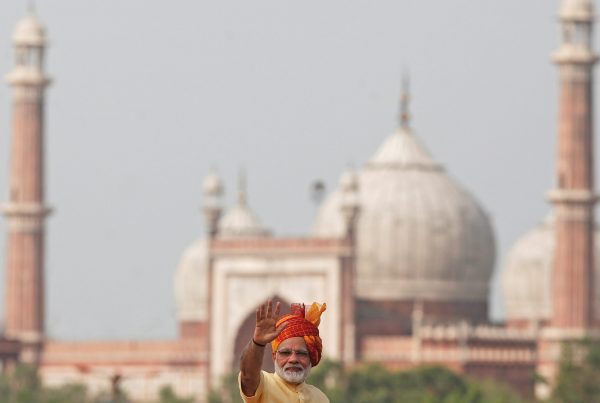The Rajya Sabha is the subordinate house of Indian parliament. Bills pertaining to money — such as the budget — need only pass through the lower house, the Lok Sabha, which ensures that control of the Lok Sabha is enough to form a government.
But upper house assent is required for all non-money bills. While a government can, in extreme circumstances, call a joint session of parliament to resolve differences between the houses — in which the larger lower house tends to outvote the upper house — this has only been successful three times. Further, a joint session is not an option for constitutional amendment. In any case, the Modi government has not had enough upper house seats to assure a majority in a joint session, given the threat of defections from regional allies or even within the BJP’s own ranks.
For Modi’s BJP to control the Rajya Sabha would require support from a variety of regional parties — including non-members of the BJP-led National Democratic Alliance (NDA). What’s more, some of the proposed changes require constitutional amendment, which needs a supermajority of two-thirds in each house.
Since state legislatures collectively contain a much wider range of regional parties than the national parliament, and the Rajya Sabha is elected by state legislatures, the Rajya Sabha has always been a much more diverse body than the Lok Sabha.
Given its narrower geographic base, the BJP has therefore been at a greater disadvantage in the Rajya Sabha than the rival Indian National Congress party. Despite having been in power for nine of the last 19 years, the BJP has never had more upper house seats than the Indian National Congress until this year, and the NDA still has fewer seats than the United Progressive Alliance (UPA).
The upper house arithmetic is shifting in the BJP’s favour for a variety of reasons. In addition to winning large majorities in several states — including India’s largest state Uttar Pradesh — the government has succeeded in winning over some regional opposition parties. The most significant of these is Bihar, a large state where a former NDA partner, the Janata Dal (United), returned to the fold.
But even in the best-case scenario, there is no prospect of either the BJP or the NDA having an outright majority in the Rajya Sabha. To pass legislation, they would still need the backing of parties that presently support neither alliance. And even in a joint session, where the NDA might have a majority, the NDA’s regional parties would prove decisive.
The varying fortunes of several key economic reform measures illustrate this point.
Modi’s most important economic reform so far, the Goods and Services Tax (GST), required a constitutional amendment to pass. It was opposed by many regional parties concerned with the loss of state revenue, including BJP allies. It did eventually pass through the upper house with the help of the Indian National Congress, but only after many compromises with regional parties.
Similarly, the Real Estate Bill passed only after compromises with opponents and a tug of war between an initial version introduced by the previous UPA government, and the Modi government’s version, which the UPA argued favoured developers over homebuyers.
Party alliances aside, internal dissension also limits Modi’s ability to pass significant legislation. This was exemplified by Modi’s unsuccessful constitutional amendment to create a national body to identify and promote the welfare of ‘other socially and economically backward classes’ (OBC). The OBC bill sought to take this responsibility out of the hands of state governments, thereby making it harder to add relatively wealthier peasant segments to the OBC category.
This bill had nothing do with economic reform. It was, however, important for the BJP’s long-term electoral strategy, which has rested in large measure on wooing less-advantaged OBC groups from parties founded on championing OBC interests. The politics of championing OBC interests has driven the formation and success of regional parties since the 1980s.
The issue is volatile because unlike the Scheduled Castes and Tribes — who are already identified by national policy and eligible for national preferences — OBC consist of peasant and artisan communities that are historically of marginally higher status. The OBC are not defined in the constitution, giving state governments wide latitude to determine which occupational communities are eligible for benefits. This means parties compete not just on what benefits to extend to the OBC, but who to put in the category. It also means parties never oppose OBC benefits but rather oppose particular definitions.
The BJP’s attempt to nationalise the definition of OBCs was in part an effort to limit the ability of relatively well-off peasant groups from getting access to benefits. The bill’s failure, in turn, exemplified the divisions running even within the BJP, many of whose members failed to turn up for the upper house debate on the issue.
The prospect of the BJP securing a working majority in the Rajya Sabha in 2018 is significant, but it is unlikely to be decisive for the passage of its agenda. On the one hand, critical bills have passed as a result of negotiation with the opposition. On the other, bills that have failed have often failed because of dissension on the government side. This trend will likely continue as an NDA majority in the Rajya Sabha is dependent on cooperation from BJP’s regional allies.
Arun R Swamy is Associate Professor of Political Science at the University of Guam.

